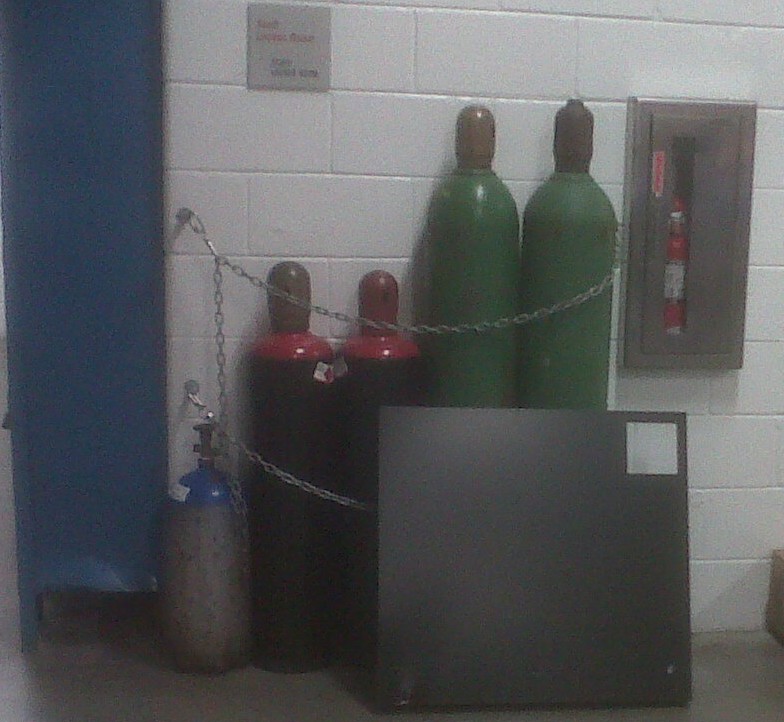Compressed Gas
Compressed gas cylinders in the wrong hands can be killers. They have the potential to burn, explode, or release toxic vapors. Don’t wait for an accident to wake the sleeping giant in your workplace. Train employees now about compressed gas safety.
Gases contained within compressed gas cylinders can be toxic, flammable, oxidizing, corrosive, inert, or some combination thereof. Because the chemical is in gaseous form and pressurized, it can quickly contaminate a large area in the event of a leak in the cylinder, the regulator, or any part of the system after the regulator; therefore, familiarity with the chemical hazards of the gas is necessary.

The gas can also be injected into the body through the skin if the gas is blown against the skin with sufficient pressure. In addition to the chemical hazards, there are hazards from the pressure of the gas and the physical weight of the cylinder. A gas cylinder falling over can break chemical containers and crush feet. The cylinder can itself become a rocket if the cylinder valve is broken off. Appropriate care in the handling and storage of compressed gas cylinders is essential.
The hazards associated with compressed gases include oxygen displacement, fires, explosions, and toxic gas exposures, as well as the physical hazards associated with high pressure systems. All industrial gases have properties which, if proper precautions are not followed, may cause injury, and possibly death. Special storage, use, and handling precautions are necessary in order to control these hazards.
General Handling Procedures
- Cylinders must be transported, stored and used upright (with the valve up), and must be securely fastened to prevent them from falling or being knocked over. Suitable racks, straps, chains or stands are required to support cylinders.
- Cylinder valves are to be protected with the standard cap when not in use (empty or full). Regulators are to be protected with covers where there is likelihood of damage.
- Never force a cap or regulator. The cap should be only be hand tight.
- Cylinders should not be exposed to excessive dampness, or to corrosive chemicals or fumes.
- Cylinders are not to be exposed to temperature extremes nor stored in the vicinity of combustibles.
- Gases are not to be transferred from one vessel to another. Do not try to refill compressed gas cylinders.
- Before using a cylinder, slowly “crack” the valve to clear dust or dirt, being sure the opening is not pointed toward anyone. Additional precautions must be taken when toxic or flammable gases are involved. Do not stand in front of the regulator gauge glass when opening the valve.
- Never use a cylinder without a regulator. Always use the correct pressure regulator.
- After attaching the regulator, and before the cylinder is opened, check the adjusting screw of the regulator to see that it is released. Never permit the gas to enter the regulator suddenly.
- Never try to stop a leak between a cylinder and regulator by tightening the union nut unless the valve has been closed first.
- Never strike an electric arc on a cylinder.
- Never use a leaking, corroded or damaged cylinder. Remove the cylinder from service and contact the supplier for return.